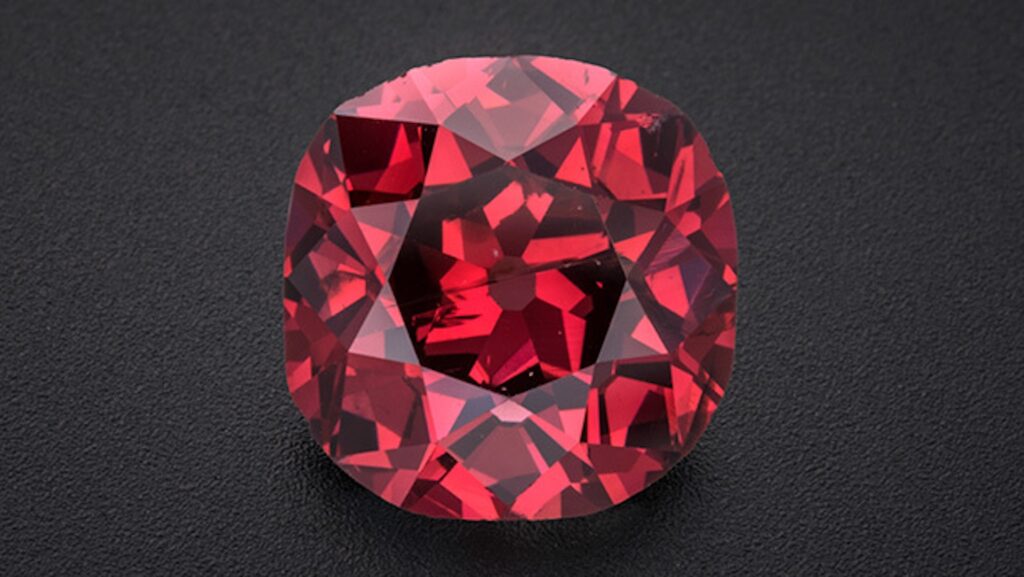Diamonds aren’t always colorless; they can also be blue, yellow, green and even pink. But what makes these jewels come in varied hues?
At their base, diamonds are made of a single element: carbon. “It’s just pure carbon,” forged into treasure under very high pressures, said Luc Doucet, a senior research fellow of geology at Curtin University in Australia. They typically form deep beneath Earth’s surface, more than 100 miles (161 kilometers) down in the planet’s mantle. Here, the pressure and temperature are extreme enough for the carbon atoms to bind together in a tight lattice.
After forming, diamonds need to rise to the surface very quickly for their lattice to stay intact. This usually happens when volcanic eruptions eject the rocks up from the depths. If a diamond stays in the deep, they may melt or transform into graphite over the course of millions of years.
“We’re actually very lucky that we even get to find them, because they have to then be expelled from the deep Earth,” said Gabriela Farfan, the Coralyn Whitney curator of gems and minerals at the Smithsonian National Museum of Natural History.
The majority of diamonds are colorless. But there are a couple of ways normal diamonds can turn into “fancy color diamonds,” Farfan said.
First, like all minerals, diamonds can get impurities when they form. These flaws are elements other than carbon that get integrated to the gem’s structure. But because carbon molecules are so small and very tightly packed, very few elements can get introduced into diamonds. “There aren’t very many elements that can substitute in,” Farfan said.
Related: Which are rarer: diamonds or emeralds?
However, there are a few exceptions. Nitrogen, carbon’s neighbor on the periodic table, can sneak into the diamond’s lattice, making yellow or orange diamonds. Boron, another element with a small atomic radius, can make striking blue diamonds, such as the famous Hope Diamond.
Radioactive radiation can also make diamonds green. This can happen if the neighboring rocks near the gems have uranium, which can “expel atoms to create vacancies” in the diamond’s structure, Farfan said.
Diamonds can also get their color through structural deformities. This is how pink and red diamonds form. These stones get these hues because their carbon lattices become warped when they are deep inside the planet.

A diamond has to be squished in just the right way to take on a pinkish or bright-red hue. “It’s kind of like Goldilocks,” Doucet said. If a diamond is put under too much pressure, it can turn brown; if it’s not under enough pressure, it stays colorless. “There are a lot of brown diamonds, and very, very few pink diamonds,” Doucet noted.
Interestingly, because of how pink and red diamonds form, scientists can analyze these gems and understand exactly where and when in Earth’s crust they originate. The geologic processes of an area leaves behind a signature in a diamond’s deformities. “So in this way, pink [and red] diamonds are the only ones you could potentially try and trace back to a geographic region,” Farfan said.
For instance, Doucet studied pink diamonds from the Argyle mine in Western Australia, one of the largest diamond mines in the world. By looking at the gems’ structure, he and his colleagues pinpointed that the stones were made during the breakup of Earth’s first supercontinent 1.3 billion years ago. The results were published in a 2023 study in the journal Nature Communications.
Farfan pointed out that the Winston Diamond, which was recently put on display at the Smithsonian National Museum of Natural History, is bright red. And based on an analysis published in the journal Gems & Gemology, it likely came from somewhere in Venezuela or Brazil.
Studying these fancy color diamonds can also be a useful tool for science. They can help researchers understand what was going on inside Earth and how carbon cycles shifted throughout the planet’s history, Doucet said.
These diamonds are special because “Earth produced them under such unique circumstances,” Farfan said. “It’s just a miracle that it even exists in the first place.”
